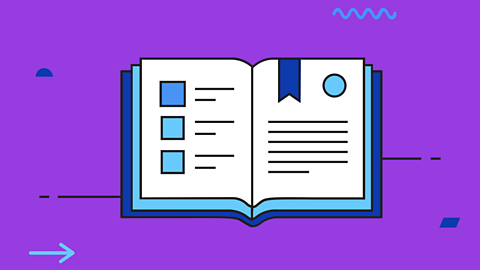This page provides tailored tips to help you approach your English literature exam questions effectively. You'll find advice on structuring your answers, identifying key themes and using evidence to support your points. These insights will help you develop the skills needed to tackle a variety of questions with clarity and confidence.
Use these tips to identify areas where you feel strong and those that may need more practice. Remember, the actual exam questions will only be revealed on the day of the exam, but the advice here will help you prepare for the types of questions you may encounter.
Top tips: Paper 1
1. Shakespeare (Section A)
Past paper trend: In Paper 1 Section A there will be one question on the Shakespeare text that you have studied.
The Shakespeare question will include an extract to support your answer. It usually has two parts:
Part (a) asks you to analyse language, form and structure in the extract.
Part (b) requires you to discuss how a theme or character is developed across the whole play, including relevant context.
Annotate the extract by highlighting evidence that can support your answer. As you annotate make sure to note what the evidence shows you, so you don't forget when you write your full response.
Since you have both the extract and quotes, this is your opportunity to demonstrate your understanding of the language. Make sure to explain the connotations of key words or phrases that relate to the question.
For the second part of the question, which covers the whole play, write down your initial ideas as soon as you read the question to help you remember strong points when you begin writing your response.
2. Post-1914 (Section B)
Past paper trend: This question covers the modern prose or drama you have studied (Post-1914).
The first thing you need to do is identify the correct questions for the text you have studied. There are many different books or plays to choose from, so make sure to locate the one you know well. You will then be given two questions and you only need to choose one to answer. There is no extract provided for this question.
To be fully prepared you should revise the:
- themes
- characters
- plot events
- social and historical context
The question will often instruct you to 'refer to the context of the play' in your answer. Although context is not separately assessed, linking your ideas to relevant background information (such as social, historical or cultural influences) can strengthen your analysis.
Top tips: Paper 2
1. Pre-1914 (Section A)
Past paper trend: In Paper 2 Section A you will answer a question on the pre-1914 novel you have studied.
The question will ask you to analyse an extract from your novel and discuss how a key theme, character or idea develops throughout the rest of the text.
To answer effectively:
Read the extract carefully, considering how it relates to the question.
Annotate key phrases and techniques, identifying evidence that supports your response.
For the extract-based part focus on analysing language, structure and techniques used in that passage.
For the whole-text part refer to key moments elsewhere in the novel that develop the theme, character or idea.
2. Poetry anthology (Section B)
Past paper trend: Section B of Paper 2 contains a comparative poetry question based on the poetry anthology you have studied.
The question will provide a copy of one poem. You must compare this poem with another from the same anthology, focusing on a given theme. The other poems will not be provided in the exam paper, so you should be familiar with their key themes, ideas and significant quotes.
To prepare effectively:
- locate evidence within each poem that could relate to different themes
- memorise key quotes to support comparisons in your response
This question might ask how a theme or particular idea is ‘presented’. This means you need to focus on the language and structural techniques used in the poem and explain their impact on you as a reader.
3. Unseen poetry (Section C)
Past paper trend: Section C of Paper 2 focuses on unseen poetry. Many candidates struggle to complete this section due to poor time management.
This section is worth 32 marks, so planning your time will help you secure as many marks as possible. As a general guide, spend around:
- 55 minutes on Section A
- 50 minutes on Section B
- at least 35 minutes for Section C
Try to stick to your time allocations. Move on when your time for a section runs out and if you finish early you can always return to previous answers to refine them.
Worked example question
This example question asks you to compare the ways the writers present a theme in the two poems:
Some Days
Some days, the weight of the air pushes into my chest
So that I grasp for breath in thick fog,
Unable to find oxygen in the suffocating darkness;
There has been no weather forecast to warn
Of the impending weather
But it stops me from turning.
Or moving.
Or breathing.
And it locks me in place.
Put That Day to Bed:
Every day ends as the sun sets and we creep into night.
Do not let the night be a time to mirror the darkness.
Every chink in the armour,
every harsh word,
every cruel intention:
Put that day to bed.
Do not let the miniature reflections of others’ minute minds
Become the route map of your thoughts.
Put them and that day to bed.
Roll over.
Wake again.
Question
Compare the ways the writers explore ideas about anxiety in ‘Some Days’ and ‘Put That Day to Bed’. In your answer you should compare:
- the ideas in the poems
- the poets’ use of language
- the poets’ use of form and structure
Use evidence from the poems to support your comparison.
You will be evaluated on your ability to compare texts, as well as analyse the language, form and structure a writer uses to create meaning. This is a very difficult task to complete without planning, so it is good practice to set up a planning table that uses the bullet points in the question such as this:
| Some Days | Put That Day to Bed | |
|---|---|---|
| Ideas in the poems about anxiety / being anxious | ||
| The use of language to describe being anxious / anxiety | ||
| The use of form / structure in relation to being anxious / anxiety |
You can then use this planning table to write your answer.
If you struggle to read and analyse poetry here are some helpful tips:
Read the poem as you would a piece of prose, paying attention to punctuation. This approach will help you read it in full sentences and understand it better. Additionally, it will allow you to analyse the poet's use of punctuation, which contributes to the poem's structure.
Identify techniques in key lines. You will be marked on your ability to recognise the impact of these techniques and to use subject terminology such as ‘simile,’ ‘metaphor,’ ‘imagery’ and ‘phrase.’ If you notice a technique try to name it but don’t worry if you can’t.
Annotate the poem as you read. This will help you create your plan for your response.
Always explain the impact when you are responding. Consider using a ‘What/How/Why’ structure in your response. This is a structure that you can use for at least three good comparisons and it will help you to keep your writing concise and to the point. Here is an example:
What: What does the poet do?
The poet presents the speaker as suffering from crippling anxiety on Some Days and this reflects their view of life. When the poet writes ‘I grasp for breath in thick fog,’ we get the impression that the anxiety is life threatening.
How: How is this done?
We don’t usually ‘grasp’ for breath, we usually ‘gasp’ for it. The use of the verb ‘grasp’ here seems quite violent – as grasping has connotation of being aggressive and desperate to get hold of something. It could mean that the poet is trying everything they can to get hold of air that they can breathe. Therefore, this seems life threatening. By describing the air with the metaphor of ‘thick fog’ the speaker makes the reader feel as if they cannot see fresh air, creating a sense that the speaker is isolated in darkness, surrounded by confusion, struggling to breathe and survive.
Why: Why might the poet have done this?
The poet seems to be trying to present to the reader how difficult it can feel for the speaker when they are anxious so that we can understand the feelings of desperation.
You would then go on to explain What How and Why for the second poem and comparing how this is similar or different to the first poem.
Revise English literature
Explore more English literature resources with the full range of help from Bitesize.
Revision podcasts - English literature
Supercharge your GCSE English literature revision by listening to these podcasts on set texts.

Support - exams and revision
Exams can be stressful, but don't worry: we've got you. Check out our handy tips and advice for keeping on top of your studies and revision.

Revise Edexcel GCSE English literature
Bitesize has a full range of revision materials for English Literature, covering set texts, analysis and structure with playlists of revision videos.

Podcasts - Study support
Study smarter and take care of your wellbeing with two Bitesize experts.
